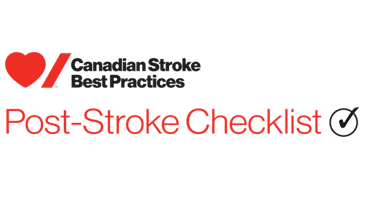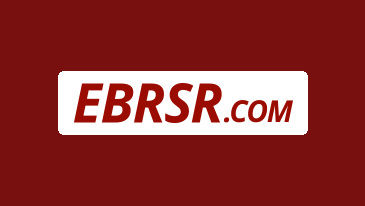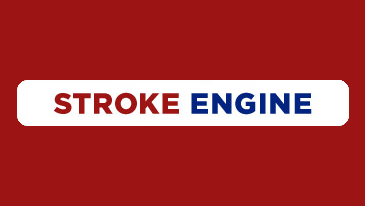- Definition and Considerations
- 1. Initial Stroke Rehabilitation Assessment
- 2. Stroke Rehabilitation Unit Care
- 3. Delivery of Inpatient Stroke Rehabilitation
- 4. Outpatient and In-Home Stroke Rehabilitation (including Early Supported Discharge)
- 5.1 Management of the Upper Extremity Following Stroke
- 5.2. Range of Motion and Spasticity in the Shoulder, Arm and Hand
- 5.3. Management of Shoulder Pain & Complex Regional Pain Syndrome (CRPS) following Stroke
- 6.1. Balance and Mobility
- 6.2. Lower Limb Spasticity following Stroke
- 6.3. Falls Prevention and Management
- 7. Assessment and Management of Dysphagia and Malnutrition following Stroke
- 8. Rehabilitation of Visual and Perceptual Deficits
- 9. Management of Central Pain
- 10. Rehabilitation to Improve Language and Communication
- 11. Virtual Stroke Rehabilitation
7. Assessment and Management of Dysphagia and Malnutrition following Stroke
6th Edition - 2019 UPDATED
7.1 Dysphagia
- Patients should be screened for swallowing impairment before any oral intake (e.g. medications, food, liquid) by an appropriately trained professional using a valid screening tool [Evidence Level B]. Refer to Table 3: Suggested Swallow Screening and Assessment Tools for more information.
- Abnormal results from the initial or ongoing swallowing screens should prompt referrals to a speech-language pathologist, occupational therapist, dietitian or other trained dysphagia clinicians as appropriate for more detailed bedside swallowing assessment and management of swallowing, feeding, nutritional and hydration status [Evidence Level C].
- An individualized management plan should be developed to address therapy for dysphagia, dietary needs, and specialized nutrition plans [Evidence Level C].
- Videofluoroscopic swallow study (VSS, VFSS) or fiberoptic endoscopic examination of swallowing (FEES), should be performed on all patients considered at high risk for oropharyngeal dysphagia or poor airway protection, based on results from the bedside swallowing assessment, to guide dysphagia management (e.g. therapeutic intervention) [Evidence Level B].
- Based on the videofluoroscopic swallow study (VSS, VFSS, MBS) or fiberoptic endoscopic examination of swallowing (FEES), restorative swallowing therapy and/or compensatory techniques to optimize the efficiency and safety of the oropharyngeal swallow mechanism, should be implemented with monitoring and reassessment as required. [Evidence Level B].
- Restorative therapy may include lingual resistance, breath holds and effortful swallows [Evidence Level B].
- Compensatory techniques may address posture, sensory input with bolus, volitional control, and texture modification [Evidence Level B].
- Patients, families and caregivers should receive education on swallowing, prevention of aspiration, and feeding recommendations [Evidence Level C].
- To reduce the risk of aspiration pneumonia, patients should be permitted and encouraged to feed themselves whenever possible [Evidence Level C].
- Patients should be given meticulous mouth and dental care and educated in the need for good oral hygiene to further reduce the risk of pneumonia [Evidence Level B].
7.2 Nutrition and Hydration
- Patients should be screened for malnutrition, ideally within 48 hours of inpatient rehabilitation admission using a valid screening tool [Evidence Level C]. Refer to Table 3: Suggested Swallow Screening and Assessment Tools for more information
- Patients can be rescreened for changes in nutritional status regularly throughout inpatient admission and prior to discharge, as well as periodically in outpatient and community settings [Evidence Level C].
- Results from the screening process can be used to guide appropriate referral to a dietitian for further assessment and ongoing management of nutritional and hydration status [Evidence Level C].
- Stroke patients with suspected nutritional concerns, hydration deficits, dysphagia, or other comorbidities who may require nutritional intervention should be referred to a dietitian [Evidence Level B]. Dietitians provide recommendations on:
- Meeting nutritional and fluid needs orally while supporting alterations in food texture and fluid consistency recommended by a dietitian, speech-language pathologist or other trained professional, as appropriate [Evidence Level B];
- Enteral nutrition support in patients who cannot safely swallow or meet their nutrient and fluid needs orally [Evidence Level B].
- Nasogastric feeding tubes should be replaced by gastric-jejunum tube (GJ-tube) if the patient requires a prolonged period of enteral feeding [Evidence Level B].
- The decision to proceed with enteral nutrition support, i.e. tube feeding, should be made as early as possible after admission, usually within the first three days of admission in collaboration with the patient, family (or substitute decision maker), and the interdisciplinary team [Evidence Level B].
The published estimates of the incidence of stroke-related dysphagia vary widely from 19% to 65% in the acute stage of stroke, depending on the lesion location, timing and selection of assessment methods. The presence of dysphagia is important clinically because it has been associated with increased mortality and medical complications, including pneumonia. The risk of pneumonia has been shown to be 3 times higher when patients are dysphagic. Stroke-related pneumonia is fairly common with estimates that range from 5% to 26%, depending on diagnostic criteria. Patients with dysphagia often do not receive sufficient caloric intake, which may result in poorer outcomes as a result of malnutrition.
People with stroke emphasize the importance of caregiver education and training relating to the potential risks of dysphasia, such as aspiration.
In order to manage dysphagia and malnutrition post stroke organizations should:
- develop and deliver educational programs to train appropriate staff to perform an initial swallowing screen for stroke patients. This may include staff across the continuum, such as in emergency departments, acute inpatient units, rehabilitation facilities, and community and long-term care settings;
- ensure access to appropriately trained healthcare professionals such as speech–language pathologists, occupational therapists, and/or dietitians who can conduct in-depth assessments and recommend appropriate management to prevent malnutrition and aspiration.
- Proportion of stroke patients with documentation that an initial dysphagia screening assessment was performed in the emergency department or during hospital admission (core).
- Proportion of stroke patients who fail an initial dysphagia screening who then receive a comprehensive assessment by a speech–language pathologist, occupational therapist, dietitian, or other appropriately trained healthcare professional.
- Median time in minutes from patient arrival in the emergency department to initial swallowing screening by a trained clinician.
- Incidence of malnutrition among patients admitted to inpatient care for stroke which is leads to delays in discharge.
Measurement Notes:
- In chart audits, dysphagia screening has been poorly documented. Clinical providers should be educated and made aware of the importance of documenting dysphagia screening for valid and reliable measurement and monitoring.
- Measure 1 is a mandatory reporting indicator for the Accreditation Canada Stroke Distinction Program
Health Care Provider Information
- Table 1: Stroke Rehabilitation Screening and Assessment Tools
- Table 3: Suggested Swallow Screening and Assessment Tools
- Mini Nutritional Assessment
- Malnutrition Universal Screening Tool (MUST)
- Canadian Nutrition Screening Tool
- Stroke Engine
Information for People with Stroke, their Families and Caregivers
Evidence Table and Reference List
The use of a standardized program for bedside screening is now included in most clinical guidelines. Its implementation has long been thought to decrease the incidence of dysphagia-related pneumonia. Bedside screening may include components related to a patient’s level of consciousness, an evaluation of the patient’s oral motor function and oral sensation, as well as the presence of a cough. It may also include trials of small sips of water, whereby a “wet” or hoarse voice are suggestive of an abnormal swallow. A recent systematic review (Smith et al. 2018) included the results from 3 RCTs comparing dysphagia screening protocols or quality improvement interventions designed to improve screening rates versus no screening, alternative screening, usual care. The percentage of patients who received dysphagia screening and developed pneumonia was not significantly lower, compared with patients in a control group, in any of the trials. The authors highlight the lack of evidence from RCTs and state that “no conclusions can be drawn about the clinical effectiveness of dysphagia screening protocols.”
While texture-modified diets, the use of restorative swallowing therapy, and compensatory techniques, are the most commonly used treatments for the management of dysphagia in patients who are still safe to continue oral intake, there is little direct evidence of their benefit. The effectiveness of a variety of treatments for dysphagia and nutritional management was evaluated in a Cochrane review (Bath et al. 2018). Dysphagia treatments examined included acupuncture, behavioural interventions, drug therapy, neuromuscular electrical stimulation, pharyngeal electrical stimulation, physical stimulation (thermal, tactile), transcranial direct current stimulation, and transcranial magnetic stimulation. Overall, there was no reduction in the odds of death or disability or case fatality at the end of the trial associated with dysphagia therapies. While swallowing therapy significantly reduced the proportion of participants with dysphagia at the end of the trial, reduced the risk of chest infections or pneumonia, and was associated with a mean reduction in hospital length of stay or almost 3 days, the authors cautioned that further high-quality trials are required before clinical decisions can be made about what treatments are effective. Neuromuscular electrical stimulation using devices such as VitalStim have been shown to be an effective intervention for restoring swallowing function in trials including persons with stroke-associated dysphagia (Park et al. 2016, Terre & Mearin 2015). While this treatment is popular in the United States and other countries, it is not widely used in Canada. Carnaby-Mann & Crary et al. (2007) conducted a systematic review, which included the results from 7 studies of patients with oropharyngeal dysphagia secondary to stroke, cancer or other disease. A medium-sized treatment effect was reported for the outcome of change in swallowing score (SMD=0.66, 95% CI 0.47 to 0.85, p<0.001). Pharyngeal electrical stimulation is a novel new treatment that is not used routinely in clinical practice. While demonstrated to be safe, its effectiveness remains unproven (Bath et al. 2016).
For patients who cannot obtain nutrient and fluid needs orally, enteral nutrition may be required. Results from the largest trial of its kind indicates that there is little difference between routes of feeding when choosing between enteral feeding approaches. The FOOD trial (Dennis et al. 2005) also addressed the issues of timing of initiation of enteral feeding. The FOOD trial included 1,210 patients admitted within 7 days of stroke from 47 hospitals in 11 countries. In one arm of the trial, patients were randomized to receive either a percutaneous endoscopic gastrostomy (PEG) or nasogastric (NG) feeding tube within 3 days of enrolment into the study. PEG feeding was associated with a non-significant absolute increase in risk of death of 1.0% (–10.0 to 11.9, p=0.9) and a borderline increased risk of death or poor outcome of 7.8% (0.0 to 15.5, p=0.05) at 6 months. In the second part of the trial patients were randomized to receive feeds as early as possible or to avoid feeding for 7 days. Early tube feeding was associated with non-significant absolute reductions in the risk of death or poor outcome (1.2%, 95% CI -4.2 to 6.6, p=0.7) and death (15.8%, 95% CI -0.8 to 12.5, p=0.09) at 6 months. A Cochrane review (Gomes et al. 2015) comparing NG and PED feeding tubes also reported few differences between feeding tube types. PEG tubes were associated with significantly reduced odds of treatment failures (blocked tubes or disruptions in feeding schedule), but there was no significant difference between groups in in mortality, aspiration-related pneumonia or adverse events.
Oral supplementation can be used for patients who are not able to consume sufficient energy and protein to maintain body weight, or for those with premorbid malnutrition. The results from the FOOD trial (Dennis et al. 2005) indicate that while routine supplementation with an additional 540 Kcal/day for all patients, regardless of premorbid nutritional status, does not help to improve global outcomes. In this trial, 4,023 patients were randomized to receive or not receive an oral nutritional supplement in addition to a regular hospital diet, provided for the duration of their entire hospital stay. At 6-month follow-up, there was no significant difference between groups on the primary outcome, death or poor outcome (OR=1.03, 95% CI 0.91 to 1.17, p>0.05). The FOOD trial results would be compatible with a 1% to 2% absolute benefit or harm from oral supplements. Oral supplementation was not associated with a reduction in the odds of case fatality, death or dependency, the need for institutionalization, or mean LOS in a Cochrane review (Geeganage et al. 2012). However, oral supplementation was associated with a reduction in the odds of pressure sores (OR=0.56, 95% CI 0.32 to 0.96, p=0.034) and an increase in daily mean energy and protein intake.





